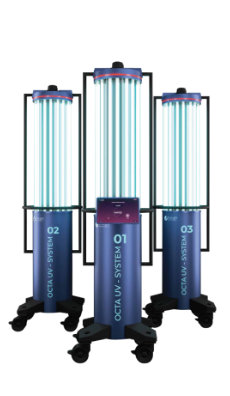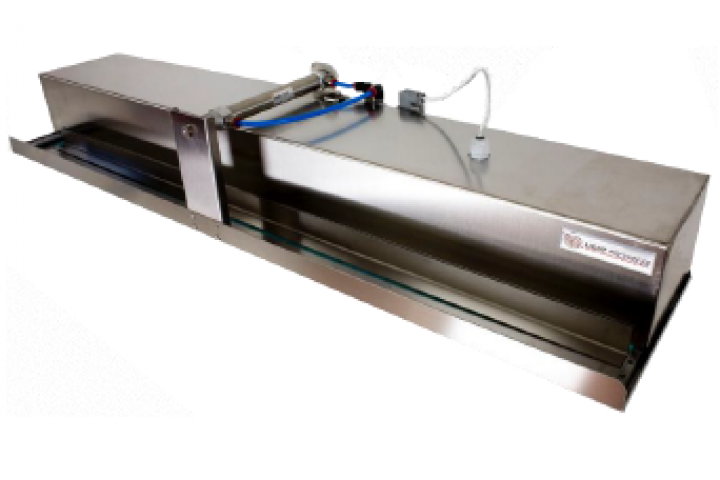Using the Power of UV Surface Disinfection: A Comprehensive Guide for Healthier Spaces
Using the Power of UV Surface Disinfection: A Comprehensive Guide for Healthier Spaces
Blog Article
UV Disinfection: The Cutting-Edge Modern Technology Changing Hygiene Practices
In the world of cleanliness methods, one innovation has arised as a game-changer: UV sanitation. With its capability to remove harmful microorganisms, this sophisticated modern technology is changing the method we approach sanitation and hygiene. But exactly how does UV sanitation job, and what are the advantages it offers? From health care settings to food handling, UV disinfection is making its mark in numerous markets. In this discussion, we will certainly discover the ins and outs of this transformative innovation and look in advance to its appealing future.
Exactly How UV Disinfection Functions
UV disinfection functions by utilizing ultraviolet light to damage or inactivate microbes, supplying a chemical-free and very efficient approach of sanitation. This innovation harnesses the power of short-wavelength UV-C light, which can damaging the DNA and RNA of bacteria, hence rendering them unable to reproduce and trigger damage.
The procedure begins with the installment of UV disinfection systems, which include UV lamps that emit UV-C light. These lamps are purposefully placed in areas where microbial contamination is a problem, such as water treatment plants, healthcare facilities, research laboratories, and food processing facilities.
When bacteria are revealed to UV-C light, the photons permeate their cell wall surfaces and reach the DNA and RNA inside. The high-energy UV-C photons interfere with the hereditary material by creating bonds in between surrounding nucleotides, resulting in the formation of thymine dimers. These dimers stop the microbes from reproducing, rendering them harmless.
UV disinfection is very effective against a broad variety of microbes, including viruses, parasites, and germs. It is particularly efficient against waterborne microorganisms like E. coli, Giardia, and Cryptosporidium. Additionally, UV sanitation is a chemical-free technique, getting rid of the requirement for potentially dangerous disinfectants and decreasing the danger of damaging disinfection by-products.
Benefits of UV Sanitation
UV disinfection uses various benefits in the field of hygiene, making it an extremely preferred technique for efficiently removing dangerous microorganisms. Unlike traditional sanitation methods that count on chemicals, UV disinfection makes use of ultraviolet light to destroy the DNA of microbes, making them unable to replicate and create infections.

UV disinfection is also highly versatile in its applications. It can be used in various settings, consisting of medical facilities, institutions, food processing facilities, and water treatment plants. UV sanitation systems can be conveniently incorporated right into existing hygiene practices, offering an extra layer of security against infectious conditions.
In enhancement to its performance and convenience, UV sanitation is likewise ecologically friendly. It does not generate any kind of harmful results or deposits, making it a sustainable and safe technique for cleanliness - uv surface disinfection. Additionally, UV disinfection requires marginal upkeep and has a long lifespan, causing price financial savings in the future.
UV Sanitation in Medical Care Settings
In health care setups, UV sanitation has actually emerged as a revolutionary technique for properly getting rid of hazardous microbes. UV disinfection functions by producing ultraviolet light at a details wavelength that is deadly to microorganisms, viruses, and other microbes.
Firstly, UV sanitation is a non-chemical method, making it an eco friendly alternative contrasted to typical disinfection techniques that usually involve making use of severe chemicals. Making use of UV light eliminates the need for chemical disinfectants, lowering the threat of damaging deposit or chemical direct exposure to both patients and healthcare employees.
In addition, UV disinfection is highly effective in killing a variety of bacteria, including drug-resistant bacteria such as MRSA and C. difficile. It offers a trusted and regular sanitation procedure, making certain that all surface areas and tools are completely sanitized, even in hard-to-reach areas.

UV Sanitation in Food Processing
The application of UV disinfection expands past healthcare setups and locates considerable value in the realm of food handling. uv surface disinfection. UV sanitation innovation is becoming increasingly prominent in the food industry due to its capacity to successfully get rid of harmful virus and improve food safety
One of the main advantages of UV disinfection in food processing is its capability to target a large range of microbes, consisting of molds, viruses, and bacteria. By utilizing UV light at particular wavelengths, it is possible to interrupt the DNA and RNA of these microorganisms, rendering them not able to recreate or cause injury. This modern technology can be used to numerous stages of the food processing chain, including surface area sanitation, navigate to these guys devices sterilization, and water treatment.
UV sanitation gives a non-thermal and chemical-free technique of sterilizing food products. Unlike typical sanitation techniques that rely on chemicals or warmth, UV innovation does not leave any kind of residue or modify the preference, texture, or dietary value of the food. This makes it an excellent remedy for markets that require rigorous adherence to high quality standards.
Furthermore, UV sanitation systems are simple to run and set up, requiring marginal upkeep. They can be integrated right into existing processing lines without creating considerable disruptions to the manufacturing process. In addition, UV systems have a quick browse around this site therapy time, enabling continual handling and reducing downtime.
The Future of UV Sanitation

One area where UV sanitation is expected to make significant innovations remains in the field of healthcare. With the increase of antibiotic-resistant germs and the demand for more effective disinfection techniques, UV light has the prospective to play an essential function in minimizing healthcare-associated infections. UV sanitation systems can be utilized to sanitize surfaces, devices, and also the air in medical care centers, aiding to stop the spread of damaging Visit This Link microorganisms and enhance individual safety and security.
An additional industry that can profit from advancements in UV sanitation modern technology is the food sector. UV light has actually currently shown to be an efficient method for decontaminating foodstuff and lowering the threat of foodborne ailments. As modern technology enhances, we can expect to see more reliable and economical UV disinfection systems being implemented in food handling plants, making sure that the food we take in is safe and without unsafe germs.
Final Thought
In conclusion, UV sanitation is an advanced technology that is changing cleanliness techniques in health care settings and food handling. By utilizing UV light to eliminate or shut off microorganisms, it supplies various advantages such as safety and security, effectiveness, and performance. With recurring developments in this area, UV disinfection holds excellent potential for the future of hygiene, providing a trustworthy and sustainable remedy for maintaining clean and sanitary environments.
UV disinfection is a chemical-free technique, eliminating the need for possibly unsafe disinfectants and minimizing the threat of damaging sanitation byproducts.
Unlike conventional disinfection approaches that count on chemicals, UV disinfection utilizes ultraviolet light to damage the DNA of microbes, rendering them unable to replicate and create infections. Unlike typical disinfection methods that depend on chemicals or warm, UV modern technology does not leave any deposit or alter the taste, structure, or nutritional worth of the food. As innovation boosts, we can anticipate to see extra efficient and affordable UV disinfection systems being carried out in food handling plants, ensuring that the food we take in is safe and totally free from harmful bacteria.
In verdict, UV disinfection is a cutting-edge modern technology that is changing hygiene methods in health care settings and food processing.
Report this page